Sailing yacht races have been popular for centuries, and they continue to attract enthusiasts from around the world. These races are not only exciting to watch, but they also showcase the beauty and power of sailing yachts. From the world-famous America’s Cup to the Rolex Sydney Hobart Yacht Race, many famous sailing yacht races are worth watching.
One of the most famous sailing yacht races is the America’s Cup, which is considered the most important event in the yachting world. This prestigious competition was first raced around the Isle of Wight in 1851 and was named in honor of the first winner, an iconic, US-built yacht christened America. Another famous race is the Rolex Sydney Hobart Yacht Race, which takes place on Boxing Day in summery Australia. It is one of the most challenging regattas in the world, spanning over 45,000 nautical miles.
History of Sailing Yacht Races
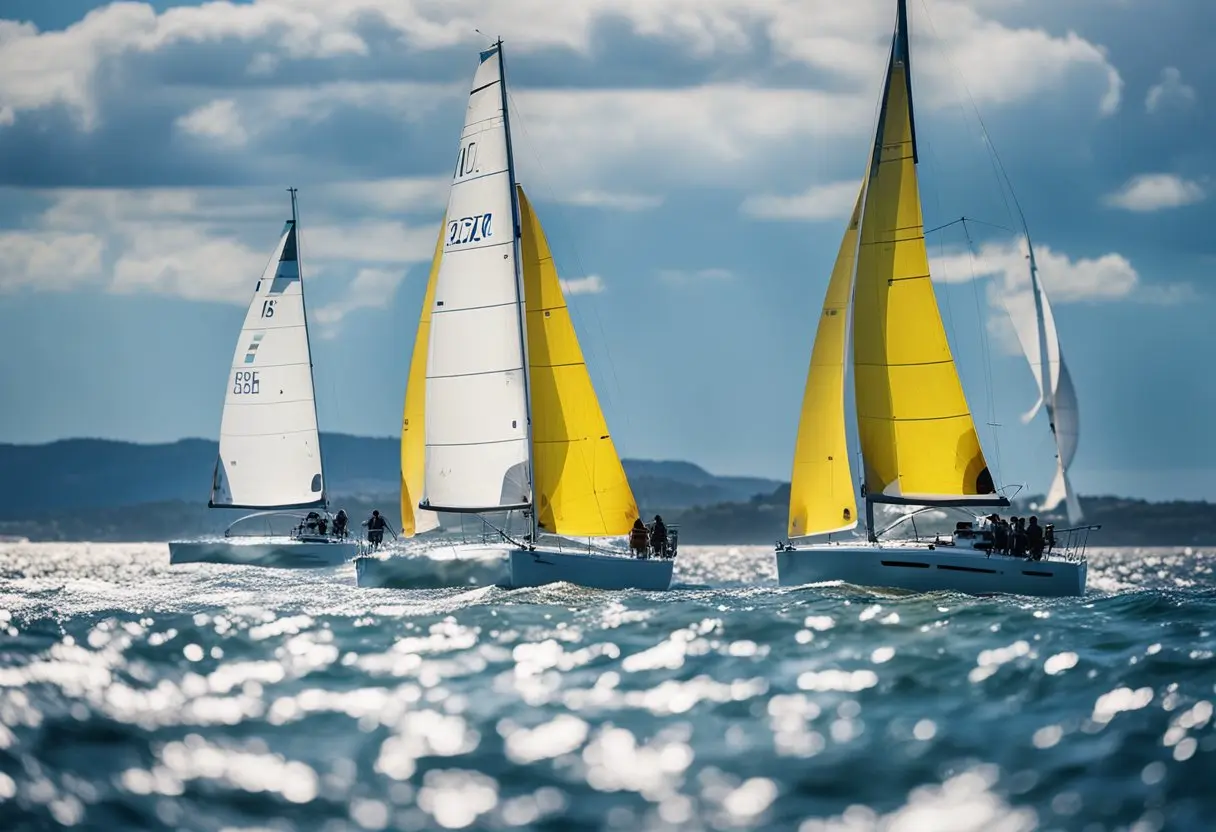
Origin and Evolution
Sailing yacht races have a long history that dates back to the 17th century when the wealthy elite of Europe would race their luxury sailboats for sport. The first recorded yacht race occurred in England in 1661, organized by King Charles II. The race, which was held on the River Thames, was a competition between two of the king’s yachts, and it was won by the yacht belonging to the king’s brother, James, Duke of York.
Over time, yacht racing evolved into a more organized and competitive sport. The first yacht club was established in Cork, Ireland, in 1720, and the first yacht club in England was the Royal Yacht Squadron, established in 1815. The first America’s Cup race was held in 1851, and it remains one of the most prestigious yacht races in the world.
Notable Historical Races
There have been many notable yacht races throughout history, including the America’s Cup, the Fastnet Race, and the Sydney to Hobart Yacht Race. The America’s Cup, which is held every four years, is the oldest trophy in international sports, and it is considered the pinnacle of yacht racing. The Fastnet Race is a biennial offshore yacht race that starts in Cowes, England and finishes in Plymouth, England, covering a distance of 608 nautical miles. The Sydney to Hobart Yacht Race is an annual race that starts in Sydney, Australia and finishes in Hobart, Tasmania, covering a distance of 628 nautical miles.
Yacht racing has also been an Olympic sport since 1900, and it includes a variety of classes, including dinghy racing and keelboat racing. The sport has continued to evolve, with new technologies and designs being developed to improve the speed and performance of yachts. Today, sailing yacht races remain a popular and exciting sport enjoyed by many around the world.
Major Global Sailing Competitions

Sailing is a sport that has been enjoyed for centuries, and there are many famous sailing yacht races held around the world. These races are not only a test of skill and endurance but also a celebration of the beauty and power of the sea. In this section, we will take a closer look at some of the major global sailing competitions.
America’s Cup
The America’s Cup is one of the most prestigious and oldest sailing yacht races in the world. It was first raced around the Isle of Wight in 1851 and is named in honor of the first winner, an iconic, US-built yacht christened America. The competition is held every three to four years and attracts the best sailors and sailing teams from around the world. The America’s Cup is known for its high-tech, state-of-the-art yachts, which are designed specifically for the competition. The race is a best-of series, with the winner being the first team to win seven races.
Volvo Ocean Race
The Volvo Ocean Race is one of the toughest and most grueling sailing yacht races in the world. It is a round-the-world race that covers over 45,000 nautical miles and takes place every three years. The race is divided into legs, with each leg covering several thousand nautical miles. The teams sail through some of the most challenging waters in the world, including the Southern Ocean, which is known for its huge waves and strong winds. The race attracts the best sailors and sailing teams from around the world, and the competition is fierce.
Vendée Globe
The Vendée Globe is a solo, non-stop, round-the-world sailing yacht race every four years. The race starts and finishes in Les Sables-d’Olonne, France, and covers over 24,000 nautical miles. The sailors sail through some of the most challenging waters in the world, including the Southern Ocean, which is known for its huge waves and strong winds. The race attracts the best solo sailors from around the world, and the competition is intense.
Sydney Hobart Yacht Race
The Sydney Hobart Yacht Race is one of the most famous and challenging sailing yacht races in the world. The race takes place every year on Boxing Day and covers over 630 nautical miles from Sydney to Hobart, Tasmania. The race attracts the best sailors and sailing teams from around the world, and the competition is fierce. The sailors must navigate through some of the most challenging waters in the world, including the Bass Strait, which is known for its strong winds and rough seas.
Fastnet Race
The Fastnet Race is a biennial sailing yacht race that starts in Cowes, England and finishes in Plymouth, England. The race covers over 600 nautical miles and takes the sailors through some of the most challenging waters in the world, including the Irish Sea and the Celtic Sea. The race is known for its unpredictable weather, which can change rapidly and dramatically. The Fastnet Race attracts the best sailors and sailing teams from around the world, and the competition is intense.
These are just a few of the major global sailing competitions. Each race has its unique challenges and attracts the best sailors and sailing teams from around the world. Whether you are a sailor or a sailing enthusiast, these races are a testament to the beauty and power of the sea.
Types of Sailing Yachts Used in Racing
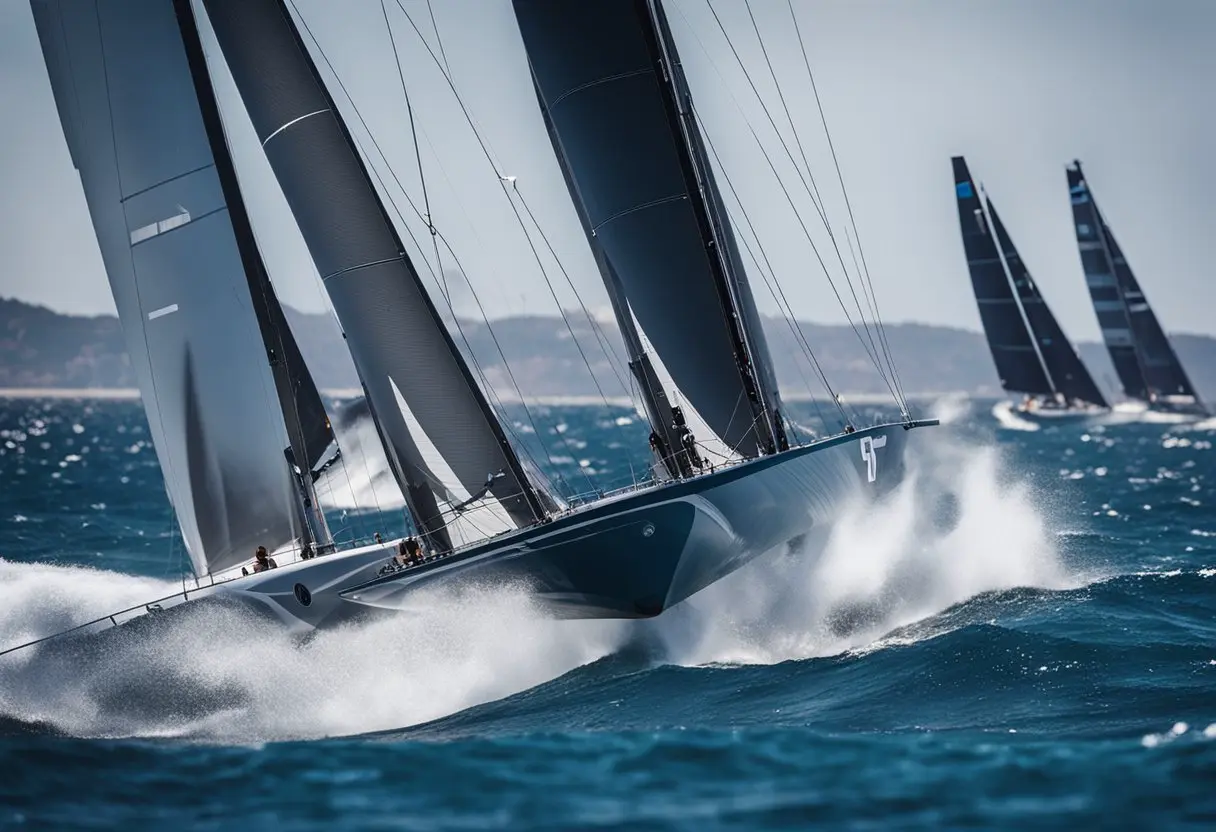
Monohulls
Monohull yachts are the most common type of sailing yacht used in racing. They are characterized by having a single hull, which makes them more stable in rough seas. Monohulls come in various sizes, from small dinghies to large racing yachts. They are designed to be fast and agile, focusing on speed and performance. Monohulls are typically sailed with a crew of several people, including a skipper, tactician, and crew members.
Multihulls
Multihull yachts, also known as catamarans or trimarans, are becoming increasingly popular in racing. They are characterized by having two or three hulls, which makes them more stable and faster than monohulls. Multihulls are designed to be fast and agile, focusing on speed and performance. They are typically sailed with a smaller crew than monohulls, as they are easier to handle. Multihulls are also more comfortable and spacious than monohulls, making them a popular choice for cruising.
Supermaxis
Supermaxis are the largest and most powerful racing yachts in the world. They are characterized by their size, speed, and luxury. Supermaxis are typically over 100 feet long and can reach speeds of up to 40 knots. They are designed to be fast and powerful, focusing on speed and performance. Supermaxis are typically sailed with a large crew, including professional sailors and experienced amateurs. They are also equipped with the latest technology and equipment, making them some of the most advanced racing yachts in the world.
Race Formats and Courses
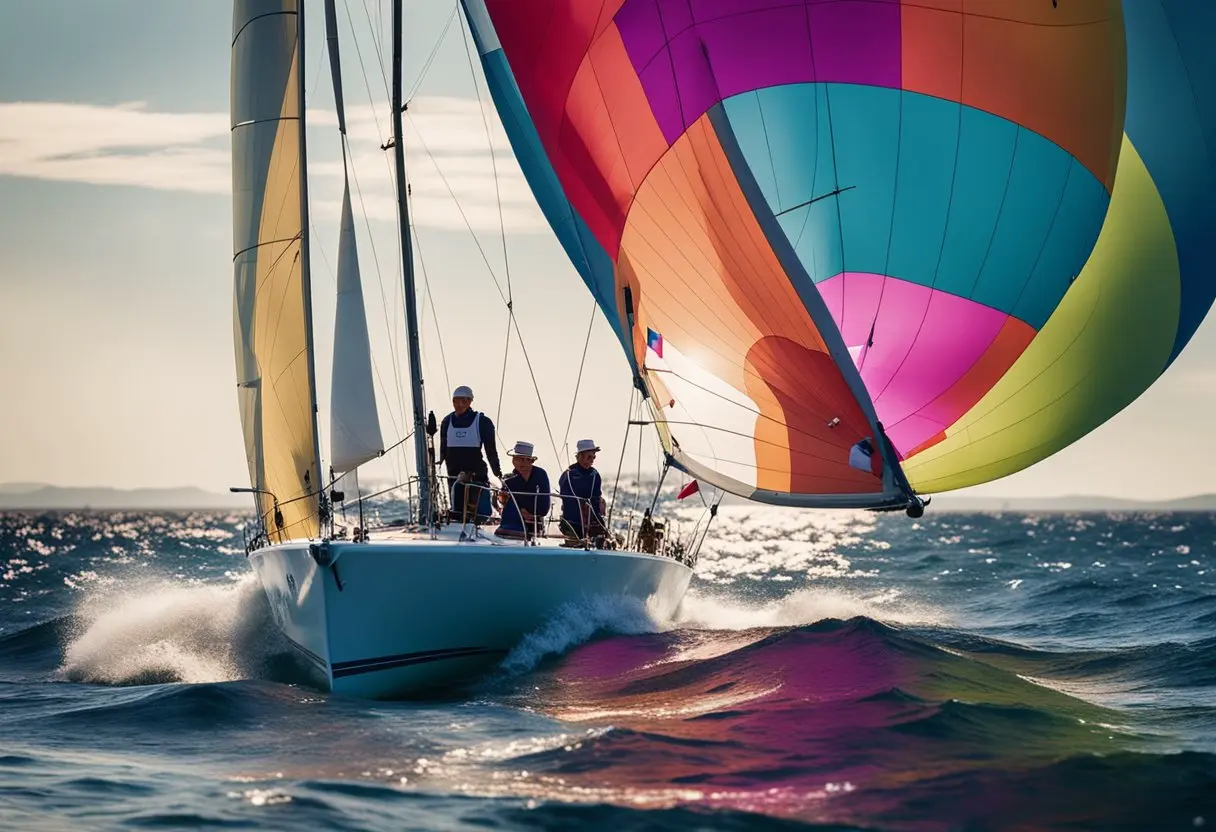
Sailing yacht races come in different formats, each with its own rules and regulations. The most common race formats include fleet racing, match racing, coastal, and offshore races.
Fleet Racing
Fleet racing involves a group of boats racing against each other on a set course. The boats start at the same time, and the winner is the boat that crosses the finish line first. Fleet racing is the most common type of sailing race, and it’s what most people think of when they hear the term “sailing race.”
Match Racing
Match racing involves two boats racing against each other in a series of races. The boats start at the same time, and the winner is the boat that crosses the finish line first. Match racing is a tactical race, and it’s all about outsmarting the other boat. The boats must follow strict rules, and penalties are given for breaking them.
Coastal and Offshore
Coastal and offshore races involve boats racing along a set course that takes them along the coast or out to sea. These races can last for several days, and the boats must be self-sufficient, carrying all the food, water, and equipment they need for the duration of the race. Coastal and offshore races are challenging, and they test the endurance and skill of the sailors.
In fleet racing, the boats are usually divided into classes based on their size and speed. The courses are set up to test the boats’ speed, maneuverability, and crew’s skill. In match racing, the boats are usually of similar size and speed, and the courses are set up to test the sailors’ tactical skills.
Coastal and offshore races can have different courses, depending on the race’s location and duration. Some races may have a set course that takes the boats along the coast, while others may have a course that takes the boats out to sea and back. The courses can be challenging, and the sailors must be prepared for all types of weather and sea conditions.
Overall, sailing yacht races are exciting events that test the sailors’ skills and endurance. Whether it’s fleet racing, match racing, coastal, or offshore races, each format has its own challenges and rewards.
Technological Advances in Yacht Racing
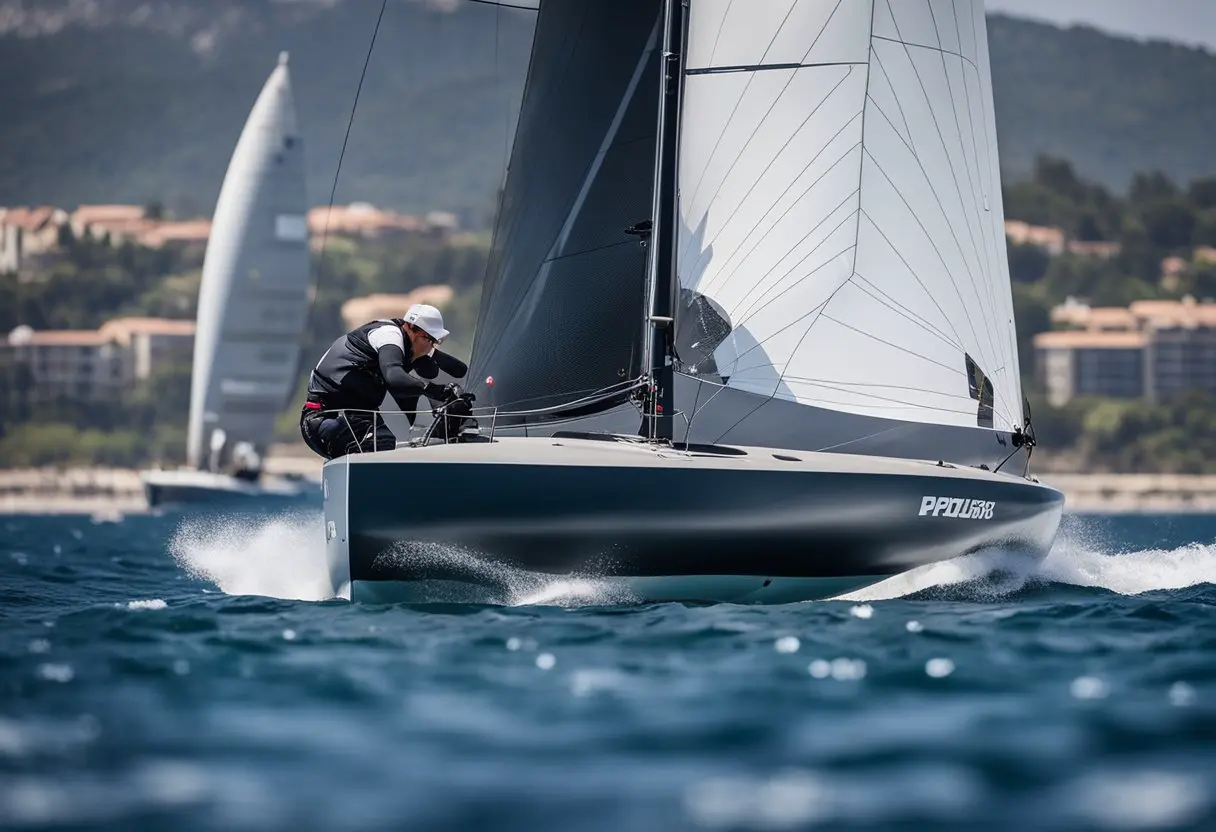
Design and Materials
Technological advances in yacht racing have revolutionized the sport, particularly in the area of design and materials. Modern yacht designs now incorporate advanced materials such as carbon fiber, which is both lightweight and strong. This allows for faster and more agile boats that are better able to handle the high speeds and rough waters of yacht racing.
In addition to carbon fiber, other advanced materials such as Kevlar and titanium are also used in yacht construction. These materials are not only strong and lightweight, but they also offer superior resistance to corrosion and other forms of wear and tear.
Navigation and Communication Systems
Another area where technological advances have had a significant impact on yacht racing is navigation and communication systems. GPS technology, for example, has made it possible for sailors to navigate more accurately and efficiently, allowing them to plot their course with greater precision and avoid hazards such as rocks and other obstacles.
In addition to GPS, other advanced navigation and communication systems such as radar and sonar are also commonly used in yacht racing. These systems allow sailors to detect other boats, as well as obstacles such as buoys and rocks, from a distance, giving them more time to react and avoid collisions.
Overall, the technological advances in yacht racing have made the sport faster, safer, and more exciting than ever before. With continued innovation and development, we will likely see even more advances in the future, further pushing the limits of what is possible in this thrilling sport.
Sailing Yacht Race Regulations and Safety
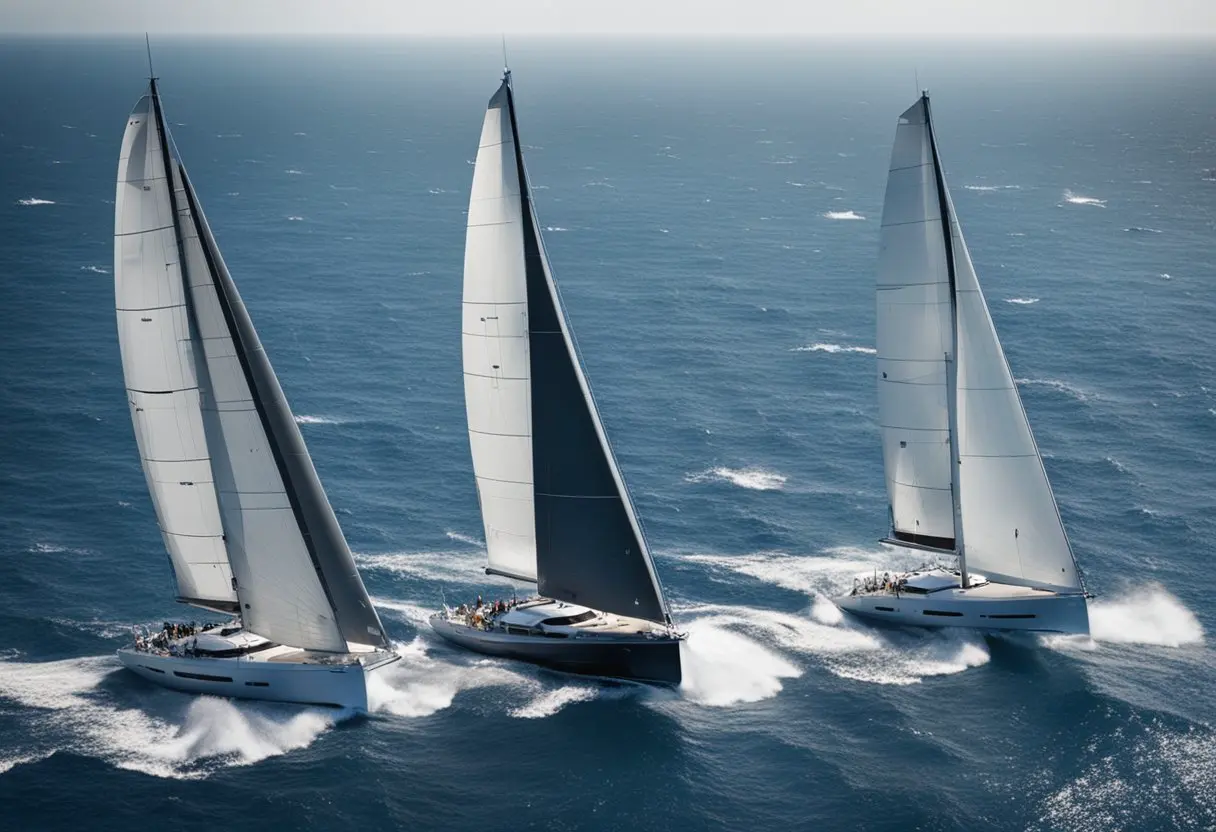
International Racing Rules
Sailing yacht races are governed by a set of international rules and regulations that ensure fair play and safety. The International Sailing Federation (ISAF) publishes the Racing Rules of Sailing (RRS), which are updated every four years. The rules cover everything from boat design and construction to crew eligibility and conduct during races.
One of the most important rules is the right of way. Boats that are on a starboard tack (wind coming from the right side) have the right of way over boats on a port tack (wind coming from the left side). Boats must also give way to boats that are overtaking them.
Another important rule is the penalty system. Boats that break a rule must take a penalty, which can be a time penalty or a penalty turn. Failure to take a penalty can result in disqualification.
Safety Equipment Requirements
Safety is a top priority in sailing yacht races, and all boats must comply with safety equipment requirements. These requirements vary depending on the race and the location, but some common safety equipment includes life jackets, harnesses, flares, and fire extinguishers.
All boats must also carry a VHF radio and a GPS device. The VHF radio is used to communicate with other boats and race officials, while the GPS device tracks the boat’s position and speed.
In addition to the required safety equipment, many sailors also carry additional safety gear, such as first aid kits, emergency beacons, and satellite phones. It is important to note that safety equipment requirements may change depending on the weather and sea conditions, so sailors must always be prepared for the unexpected.
Overall, sailing yacht races are exciting and challenging events that require skill, accuracy, and knowledge of rules and regulations. By following the international racing rules and complying with safety equipment requirements, sailors can enjoy the thrill of the race while ensuring their safety and the safety of their crew.
Training and Crew Preparation
Preparing for a sailing yacht race requires a great deal of physical and mental preparation. The crew must be in top physical condition to handle the rigors of the race. They must also be mentally prepared to handle the stress and pressure of the competition.
Physical Conditioning
Physical conditioning is crucial for the crew to perform at their best during the race. Sailing requires a combination of strength, endurance, and agility. The crew must be able to handle the physical demands of the race, including hoisting sails, trimming lines, and steering the boat.
To prepare for the race, the crew should engage in a regular exercise routine that includes cardiovascular training, strength training, and flexibility exercises. They should also focus on building endurance through long-distance running, swimming, or cycling.
Teamwork and Roles
In addition to physical conditioning, teamwork, and roles are essential for a successful yacht race. Each crew member must understand their role on the boat and work together seamlessly to achieve the best possible outcome.
The crew should practice working together in various scenarios, including tacking, jibing, and sail changes. They should also practice emergency drills, such as man overboard, to ensure that everyone knows what to do in case of an emergency.
Clear communication is also critical for a successful yacht race. The crew should establish a communication plan and practice using it during training sessions. This will help ensure that everyone is on the same page and can work together effectively during the race.
Overall, training and crew preparation are crucial for a successful sailing yacht race. The crew must be physically and mentally prepared to handle the demands of the race and work together seamlessly to achieve the best possible outcome.
Related Posts:
Sailing Yacht Solo Voyaging: Tips and Tricks for a Successful Journey
